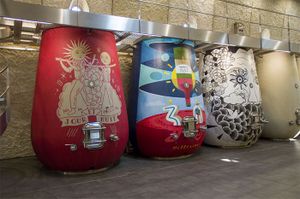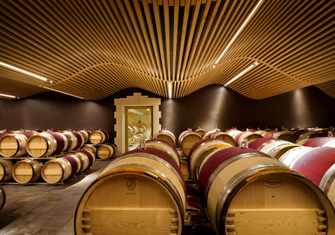Does buying wine en primeur deliver the best results and can you optimise your returns by buying ‘in-barrel’ wine?
Ahead of the Bordeaux 2023 En Primeur campaign due to start later this month we look at the principles of investing in wine futures and recent performance to see how this could influence a wine investment strategy.
Key factors for En Primeur wine investing
- The overall quality of the vintage – Prime, Mid or Off vintage
- Critics’ scores of individual wines
- Supply - is this generally a high or low supply vintage. Climate is a key influence
- The volume of the en primeur allocation made available by the chateau – there is a trend of reducing supply
- Release price – how does this compare with the previous vintage release and similarly scored, older wines available in-bottle on the secondary market
- Buyers’ perception of value and demand
- Back vintage performance
The evolution of En Primeur
Bordeaux invented the practice of selling ‘wine futures’ to key merchants to assist their cash flow in the 20th Century. En primeur allocations were sold originally at a first release price that was expected to be lower than subsequent trade prices in the secondary market.
 This routinely meant that buyers could see strong returns from en primeur investment and the popularity of purchasing fine wine futures grew so that it was no longer the preserve of the fine wine trade, and private individuals also invested ‘in-barrel’.
This routinely meant that buyers could see strong returns from en primeur investment and the popularity of purchasing fine wine futures grew so that it was no longer the preserve of the fine wine trade, and private individuals also invested ‘in-barrel’.
Over decades the prices of the most sought-after fine wines have grown, and the producers’ cash flow demand is not as acute. As a result, well-financed wine estates increased their release prices.
At the same time, they have also reduced the supply made available at en primeur, preferring to sell the wine later, closer to the drinking window, at a premium.
The three stages of the Bordeaux En Primeur campaign.
The Bordeaux annual En Primeur campaign is still one of the most highly anticipated events in the wine calendar and comprises three stages.
- In-barrel tastings of the vintage wines by critics and trade buyers
- Publication of the key critics’ quality scores of the wines they taste
- The Chateaux with their Courtiers will confirm the initial Release Prices and allocations of the en primeur wines, which are then sold to the negociants and placed onto the secondary market. Trading commences.
What can we learn from the Bordeaux 2022 En Primeur campaign?
We set out our expectations for the 2022 En Primeur Campaign last year and will provide similar insight on the 2023 vintage shortly. But how did the 2022 campaign run and what insight can we gain on how to look at investing in 2023 wines?
The factors influencing the 2022 campaign
- Quality - Bordeaux 2022 is a superlative vintage. When we look at the fundamentals the quality box achieves a huge tick. The critics rated 2022 at in-barrel tastings as “one of the greatest ever Bordeaux vintages”.
- Supply - Many of the chateaux released smaller allocations at en primeur.
- Price – 2022 wines were priced 20.8% higher than 2021 on release (source: Liv-ex). The higher quality wines than 2021 may have warranted an upward move in price, but 2021 had been priced at the same level as the very strong 2020. The 2022 upward move by some was a tough swallow for the secondary market. Reduced supply was also an influencing factor on price. As producers were struggling with higher inflation and increased costs, so too were merchants and other buyers.
- Campaign timing – The 2022 vintage En Primeur campaign was protracted as many chateaux delayed releases to monitor key competitor pricing and the market response. As a result, the 2022 En Primeur releases seemed to drag on and some ‘buyer fatigue’ was noted in Liv-ex’s post-campaign report.
The Bordeaux En Primeur 2022 campaign outcome
There’s no doubting the quality of the 2022 vintage and these will be key wines for investors to include in their portfolio planning. Price was the defining factor on demand, and this should be borne in mind with the 2023 vintage soon to be released.
The 2022 price increases on 2021 by some chateaux were not sustainable in the period that immediately followed. Chateau Angelus 2022 was priced 37.7% higher on release than the 2021 vintage in May 2023 and by June 2023 was trading at 6.8% below its market entry price. Similarly, Chateau Troplong Mondot 2022 was released at 43.7% more than the 2021 wine and was trading 14.2% below a month later. Chateau Figeac, newly raised to St Emilion Premier Grand Cru Classe A in the 2022 Classification, priced its 2022 launch with its elevated status in mind, and a 55.2% increase year on its 2021 wine.
There was a feeling later in the 2022 campaign that there was a degree of detachment by the chateaux in their pricing strategy when compared with the prices for wines already being traded in the secondary market.
However, some producers understood the requirement for the en primeur campaign to engage the market and the need to please buyers looking for value at this stage. Good timing and smart pricing won a successful release with buyers looking for more.
Chateau Cheval Blanc 2022 was released 21.5% higher than its 2021 wine, reflecting its 98-100 point score by Neal Martin and potential for perfection. However, it was also priced well for the campaign at 23% lower than the Fair Value* determined by Liv-ex in its appraisal of the Chateau’s ten most recent bottled vintages. Cheval Blanc also released its 2022 wine early in the campaign, with no distractions in comparison to its nearest quality wines.
 Les Carmes Haut Brion 2022 was also well-priced, 10% lower than its Fair Value, despite a 39.2% rise on 2021.
Les Carmes Haut Brion 2022 was also well-priced, 10% lower than its Fair Value, despite a 39.2% rise on 2021.
So, the 2022 campaign was a mixed one. The overall volume of 2022 En Primeur wine sold was down on the 2021 and 2020 campaigns. The 2022 campaign value was up on 2021, but markedly down on the 2019 and 2020 vintage releases. The key investment wine producers also reduced their allocation supply, holding stock back for higher prices in the future.
Key events for the 2023 En Primeurs
Wine-tastings: The 2023 vintage trade tastings at the top vineyards and hosted by the Union de Grands Crus de Bordeaux will take place between the 22nd to 25th April 2024.
Critics’ scores published: The most influential wine critics will publish their in-barrel quality scores during late April and May 2024. Find out who are the most influential critics for investment wines.
En Primeur allocations released: The chateaux will agree release prices and dates with their courtiers and the negociants. In recent years the Right Bank icons Chateau Cheval Blanc and Chateau Angelus have been the first of the foremost investment wines to release their new wines. The First Growths, and other key estates, tend to release late in the campaign.
Our view
Recent Bordeaux en primeur campaigns have left the fine wine market with mixed views on the validity of the process itself. There is no question about the continuing improvement in the quality of the wines the region creates. The pricing and supply of these wines at first entry is where the producers may need to take the similar great care they deploy in creating the wine. The secondary market is broader and more diversified offering greater choice than ever before. The release price could be an avoidable barrier to new and old, loyal investors.
At Vin-X, we always appraise each vintage release carefully with our exclusive focus on wine investment and achieving the best possible returns. Unlike many merchants, we are not bound to take en primeur allocations at any price to secure the wines needed to satisfy all their customers. We can take a very targeted approach to each year’s new releases. As always, we will monitor the 2023 campaign very closely and select the best wine investment opportunities we can for our clients.
You can register for our 2023 En Primeur campaign newsfeed and allocations and read more information on investing in En Primeur wine or speak to our expert team on 0203 384 2262.
* Liv-ex Fair Price Methodology uses regression analysis to measure the relationship between price and quality and establish the fair price of a wine based on its critic score and vintages already available in the market.

